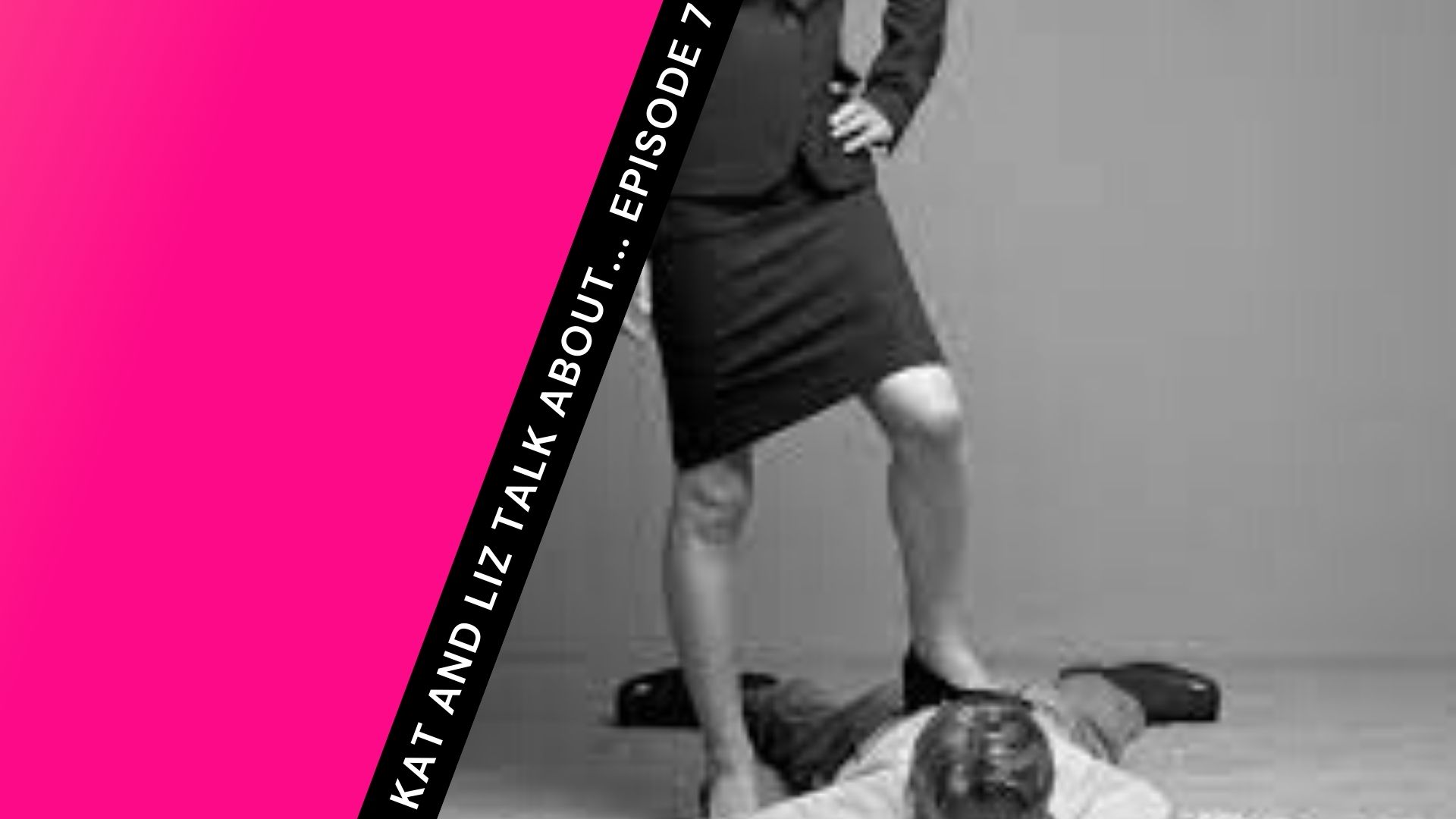In this episode of Kat and Liz Talk About…, Feminists for Liberty’s Kat Murti and Elizabeth Nolan Brown examine the impact of COVID-19 on the workforce as a whole, on parents, and on women.
Has the pandemic disproportionately set back working women? Threatened women’s workforce equality for a long time to come? That’s certainly the picture you’d get from reading the headlines—or listening to politicians like Vice President Kamala Harris, who said in February that “in one year, the pandemic has put decades of the progress we have collectively made for women workers at risk.”
In reality, the pandemic’s effects on women and working parents have been varied, and the pandemic might even lead to some positive changes for women’s equality and economic participation. Meanwhile, the magnitude of gender discrepancies has been much smaller than a lot of people have made it out to seem. And since much of it can be explained by pandemic-specific quirks, there’s little reason to predict that this will actually set women back in the long run.
Make sure to subscribe to our YouTube channel to see future episodes first, and as always, use #KatandLiz to join the conversation on Twitter!
Transcript:
Kat: “The pandemic is devastating. A generation of women.”
Liz: “Enough already—how the pandemic is breaking women.”
Kat: “Pandemic sets back women’s participation in the workforce.”
Liz: “Pushed out by the pandemic, women’s struggle to regain footing in the U.S. job market.”
Kat: “She-cession? Pandemic’s impact on women’s employment.”
Liz: “In 1 year, coronavirus pandemic has wreaked havoc on working women.”
Kat: So those are just a few of the scary sounding media headlines we’ve seen since the pandemic started.
Liz: And it’s not just media. VP Kamala Harris said in February, “in one year, the pandemic has put decades of the progress we have collectively made for women workers at risk.”
Kat: So has the COVID-19 pandemic really been as bad for women’s equality as politicians and media are making it seem?
Liz: Good news! We’re here to suggest that it hasn’t. Which is not to say that all women are thriving during the pandemic or that some facets haven’t hit women harder. But a lot of the things that are being talked about as issues for women are actually issues for parents, regardless of gender. And a lot of the more dire sounding figures get les so with a little context,
Kat: Plus pandemic work arrangements, and the things we’ve learned from them, could actually prove really beneficial to women in general, and to parents in the long run.
Liz: Economic downturns tend to hit men hardest. The recession that’s accompanied COVID has been different, especially towards the beginning. Typically jobs in manufacturing and factories are the first to go. But because the pandemic and shut down related job losses, this time were more heavily concentrated in service sectors, women were more heavily affected, since women tend to be more highly represented in retail jobs, restaurants, and the hospitality industry. In addition, because of women’s higher likelihood to be the primary caregiver for children or sick relatives, many more women than men were forced to drop out of the workforce because of pandemic related family obligations.
Kat: The good news is that, first off, none of this is nearly as big as a lot of people have made it out to be. Compared to February 20, 20, 95.9% of men and 95.2% of women were still working a few months later in April, which means women were only outpacing men in job losses by about 0.7 percentage points. Obviously, no job losses are good, but the discrepancy between men and women was much smaller than people made it seem.
Liz: Also a lot of these jobs have returned. Both men and women’s workforce participation has bounced back some, but women’s workforce participation has rebounded less consistently. Still, as of February 2021, men’s workforce participation was back up to 97.8% of its pre pandemic levels while women’s was back up to 96.9%.
Kat: All of this is different than the unemployment rate. Unemployment rates are calculated based on the number of people out of work who want to be employed—that is, they’re looking for a job or are waiting for an existing job to take them off furlough.
Liz: Since February, 2020, the number of unemployed US men went up by around 2.2 million and the number of unemployed US women went up by around 1.9 million. So women’s unemployment rate actually increased less than men’s—although that’s not necessarily a good thing, because some of that represents women losing jobs and deciding not to look for new ones.
Kat: Here’s how Gallup describes it: “When including declines in labor force participation, overall job losses have been similar between genders: 4.0 million total losses for men age 20 and older compared with 4.2 million total losses for women. But women have been much more likely to leave the labor force”— which means that they would not be in those unemployment numbers— “while men continue to actively seek employment or wait to be recalled from temporary layoff.”
Liz: So the idea that more women lost jobs to begin with and they aren’t seeking employment anymore may seem like a really bad sign, but it’s not necessarily a long-term one. Because women are more likely to be in public-facing jobs —like the waitressing, the retail jobs, etc. — they may have been less inclined to seek work again until the pandemic risk passes, because they were more likely to be contracting COVID. They may also — because of economic factors or cultural ones, or because of personal preferences — be more likely to be the ones in two parent, heterosexual relationships to stay home and take care of kids who have to be out of school during the lockdowns.
Kat: Yeah and whether this is bad, per se, depends on how you look at it. And the truth is it’s probably good for some women, neutral for others, and bad for the rest. If women are being pressured to quit their jobs to do homeschooling and they’d prefer not to, that’s obviously no good. But many women may actually prefer to be the ones handling childcare and remote schooling instead of their male partners, which is an acceptable choice for families to make as well.
Liz: The truth is it’s often very difficult to suss out how much of gendered divisions of labor are due to gender stereotypes and sexist cultural assumptions and how much are just due to different preferences. I think it’s safe to assume that women don’t just, like, love scrubbing toilets or anything like that. But there is evidence that male-female divides in preferences for different household chores and different childhood childcare tasks do exist. So divides and family labor needn’t all be chalked up to sexism.
Kat: Some of this can still be attributed to gender roles and expectations. Like, for instance, women might still be more likely to say that certain household chores or doing certain sorts of things for their kids are important to them. Whereas men might say ‘who would even care about that stuff?’ But it’s not like women are just innately in their DNA, uh, set to care about keeping things more clean or participating in school bake sales or whatever it is. It’s just that they’ve been raised to see those things as far more important than men do, or to see them as women’s duties, as opposed to men’s. And notably, they’re also much more likely to face judgment and criticism for not doing those types of things than men who don’t do those types of tasks do
Liz: Yeah. Social expectations play a huge role here. A lot of both moms and dads may prefer staying home with young kids instead of going to work, you know? Especially if they’re not in a profession or a job they really care about—which describes a whole lot of people. Or people might prefer that one parent stay home full time, no matter which parent that is. But a whole lot of things make that more difficult and make it more likely that women are going to—the fact that it’s much more socially acceptable for moms to do that, that men are still likely to be in higher wage jobs than their partners. The fact that in the earliest periods of child’s life, mom may still be recovering from childbirth and then breastfeeding. The fact that even working women often end up getting tasked with more housework in their off hours. So all of this stuff can end up pushing women to be the ones who stay home when they’re in heterosexual partnerships with men.
Kat: And then, of course, the longer a woman is out of the workforce, the more likely it is for her partner to keep earning more and more money than her and the harder it may be for her to find a satisfactory job again. The other side of this is that she might even seem better at those childcare and domestic labor tasks simply because she’s been the one doing them, which just perpetuates the cycle.
Liz: Exactly.
Kat: Studies do routinely tend to show that men think that they’re sharing duties equally at home when they’re really just not. Like for instance, according to a may 2020 New York Times study, 70% of women say that they’re fully or mostly responsible for housework during lockdown and 66% say the same for childcare. Meanwhile, just 20% of men agree that their spouses are fully or mostly responsible for housework and childcare. Another 20% of men say that they are the ones that are fully or mostly responsible for these tasks during lockdown. And only around 2% of women agree
Liz: These types of gender discrepancies and perceptions about who exactly is doing what are not new, but studies that rely on longitudinal time data and survey data from dual earner couples show that women really are still doing a majority of childcare and housework. And that was greatly magnified when a couple has kids.
Kat: So, according to a 2015 study—that’s pre pandemic— in the Journal of Marriage and Family, in dual income families that did not have a gender gap in domestic labor prior to having children, women began doing more than two hours of additional labor per day after birth compared to an additional 40 minutes for men.
Liz: Notably, this difference in how much additional labor each was doing was pretty clear in the time diary data, but not in the survey data, which in other words means that even though mothers were doing more than two hours of additional work and the fathers were doing just 40 minutes, they both perceived it as being equal.
Kat: And that’s just in the situations where couples are striving to be equal. Several recent studies also show that while young men want equality and when it comes to splitting the bills, they overwhelmingly don’t want to be equally responsible for childcare or housework. And while women increasingly are equal earners in the home, working mothers today spend just as much time doing activities with their children—that is childcare—as stay-at-home mothers did in the 1970s.
Liz: So this gets to another interesting way to pandemic and lockdowns may be changing gender roles. The New York Times noted last year that “research has shown that major changes to domestic routines sometimes have the potential to create new, more equitable ones. If both parents take leave after baby is born, for example, they share more of the work in the long term. The Guardian did a piece recently talking about a bunch of fathers who were staying home full time for the first time, or staying at home more than they usually would for the first time, and trying to juggle work and childcare. And a lot of them were like, ‘wow, I didn’t realize how much work goes into the day-to-day of taking care of kids.’ So in this case, you know, forcing fathers to spend more time at home with their kids may change perceptions and family dynamics for the better, even beyond the pandemic.
Kat: Yeah. One of the things that really stood out to me about that Guardian piece though, was that some of the fathers being featured only had custody of their kids for one or two weekends a month. And they still thought that they were now, thanks to COVID, doing a notably larger share of childbearing work than they otherwise would have been.
Liz: One of the things that stood out to me was that, that one— like so much of the media focused on, you know, parenting and gender roles and women’s troubles during the pandemic— was heavily skewed towards “creative class” or knowledge class professional or whatever you want to call it. You know, people who tend to be middle-class or above, faring pretty well during all of this, and living like a totally different pandemic experience than people who are still forced to go out in the world to work the whole time.
Kat: Yeah. This makes me think of all those COVID 19 baby bust or COVID baby, uh, things that people keep talking about. The Brookings Institute actually estimates that the United States is likely to see at least 300,000 fewer babies born in 2021, which seems really weird to me because I personally know so many people who’ve had babies or gotten pregnant in the past year, probably actually way more than in any previous year, to be honest.
Liz: Yes, same.
Kat: Right. But most of them have been exactly the sorts of people you mentioned above they haven’t lost their jobs or had their hours cut back. They’ve been working from home and not having to worry as much about risks to their health. They’ve had a lot more time with their partners. They’re facing less stress. And they have a better work-life balance than ever before. So now is kind of the perfect time for them to start a family or add more kids to it.
Liz: Meanwhile, it’s not hard to see why for huge swaths of people who have lost jobs, had their hours cut, or just see their employment status as more precarious—or who have to go out and face the risk of getting COVID every day — I mean, the past year probably seems like a horrible time to have kids. It really is like two different pandemics are happening based on one’s job sector and socioeconomic status. But. For people who have been lucky enough to have be able to telework throughout the past year, the pandemic may have had a really positive effect on mental health and work life balance not just during the pandemic, but you know, in the long run,
Kat: Right, because the issue of workplace flexibility is a huge one for working parents. And especially for working mothers. We’ve had the technological capabilities for a lot of jobs to be done at home, at least partially, for years. But the culture has yet to catch up. This has been bad for working moms, especially those in white collar jobs where being physically present at the office, in meetings, et cetera, or working set hours every day, is seen as a sign of being a hard worker, even when it’s not necessary for the job and even when they may nonetheless be working harder outside those hours than non-parents might. It lets non-parents, or people whose partner is the primary caregiver, which overwhelmingly still is men, get ahead based upon not so much their skills and the value added, but just the ability to physically be there. Working from home lets parents better juggle parenting and work responsibilities and their own ways. And we’re finding out that many can do that just fine without it negatively impacting their work.
Liz: This is really important because one of the top things that working parents say they want in a job is more workplace flexibility. The ability to sometimes work outside traditional nine to five hours, to sometimes or always work at home, to work part-time hours, things like that. In the 2019 Women in the Workforce study, the number one thing that people said they wanted was more flexibility. And other research has shown that this is more important to women than it is to men. Unfortunately, there’s also evidence that — prior to the pandemic — when workplaces did institute more flexible policies, women were much more likely to take advantage of them than their male counterparts. And this disparity could contribute to lower lifetime earnings, less promotions, and less opportunities for women. So if the pandemic has normalized more flexible arrangements for workers regardless of gender, that’s definitely a good thing for women.
Kat: Yeah. It’s interesting to me how workplace policies like flexible work or parental leave that are designed to help women and working moms can sometimes actually backfire against them if they don’t come along with changes to cultural expectations Because otherwise a lot of men just don’t take advantage of them and women get punished for doing so. But this really is a whole topic on its own, and one we plan to address in a later video.
Liz: So just to wrap up on this subject: there’s no doubt that women have experienced slightly more job disruptions during the COVID pandemic. But the magnitude of this gender discrepancy has been much smaller than many people have made it out to seem. And since much of it can be explained by pandemic-specific quirks, there’s little reason to predict that this will actually set women back in the long run. Meanwhile, there is some evidence that a lot of the workplace changes could be good going forward for working parents of both genders and especially for working mothers.
Kat: So hopefully that helps put some of the scarier things you’ve heard about the pandemic’s impact on women in particular into context. In short, it hasn’t been all good or bad. The effect has varied depending on parenting status and economic class, and the pandemic may even lead to some positive changes for women’s equality and economic participation.
Liz: Anyways, if you liked this video, please share with your friends and please keep watching and you can tell us what you think and what you’d like to see future episodes on by emailing feministsforliberty@gmail.com or tweeting at us with the hashtag #KatAndLiz.
Kat: We also encourage you to please subscribe to our YouTube channel—that’s that little button right there—and to stay up to date with Feminists for Liberty events and news by signing up for our monthly newsletter at feministforliberty.substack.com, or following us on social media. We’re @FeministLiberty on Twitter and Feminists for Liberty on Facebook and Instagram.
Liz: And, as always, thank you for watching
Kat: Bye!



